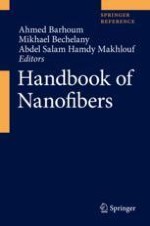2019 | OriginalPaper | Chapter
7. Carbohydrate-Based Nanofibers: Applications and Potentials
Authors : Sajad Bahrami, Moein Adel, Fariba Esmaeili, Seyed Mahdi Rezayat, Bita Mehravi, Masoumeh Zahmatkeshan
Published in: Handbook of Nanofibers
Publisher: Springer International Publishing
Activate our intelligent search to find suitable subject content or patents.
Select sections of text to find matching patents with Artificial Intelligence. powered by
Select sections of text to find additional relevant content using AI-assisted search. powered by
